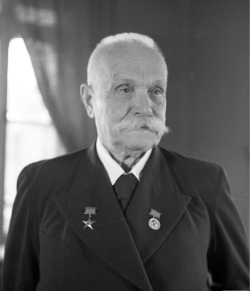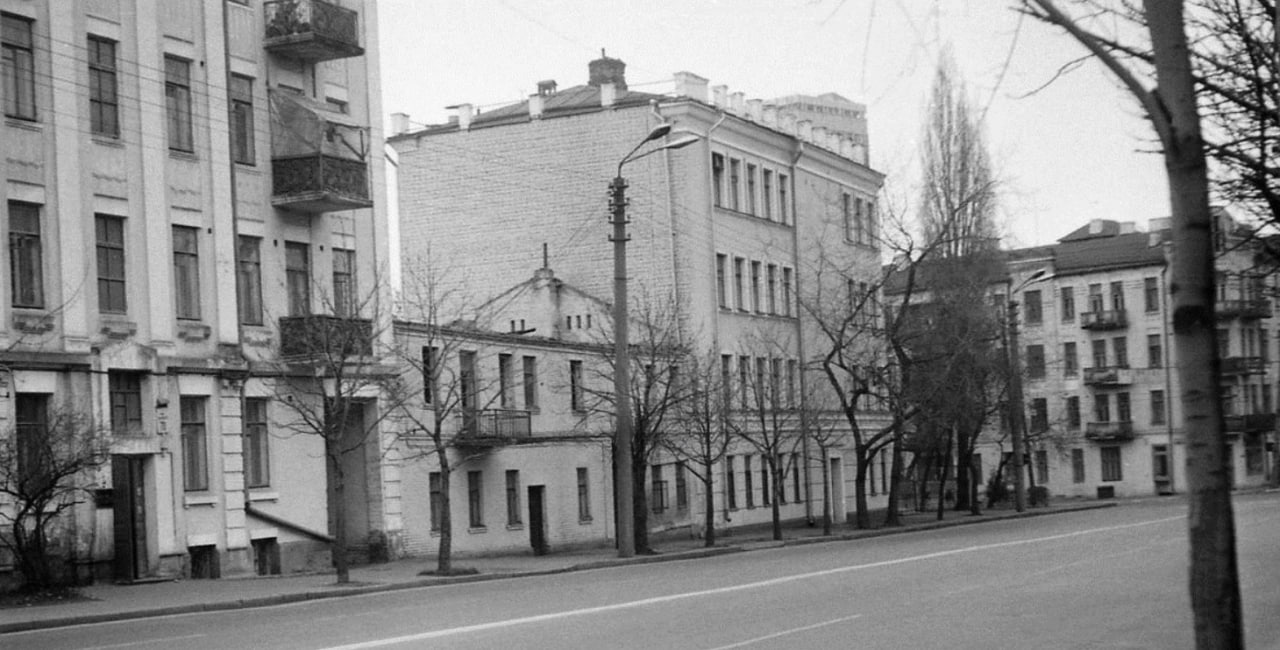
After the end of the Civil War, the renowned theorist and practitioner of bridge construction, head of the Department of Bridges at Kyiv Polytechnic Institute, Professor Yevhen Paton, actively participates in the implementation of a large-scale program for the restoration of destroyed bridges and the construction of new ones.
The enormity of the tasks, the economic and technical problems that arise during their implementation, forced the 57-year-old scientist to look for answers to the question: how can the time of bridge construction be shortened, the cost of labor and materials reduced, and their reliability increased? What can replace the time-consuming and expensive riveting process?
In 1928 Yevhen Paton conducts tests of a majorly repaired bridge at one of the small railway stations. According to him, there he saw for the first time how a young electric welder quickly and accurately welded a long steel strip to a longitudinal beam. He had heard about electric welding before, but he met it with his own eyes for the first time. What he saw made him think: "What a surprisingly simple and economical way to connect metals! Who knows, maybe he is destined to make a real revolution in the construction of bridges, steel structures, wagons".
The bridge scientist "fired up" with the idea of welding seriously. It was clear to Yevhen Paton that the future belongs to electric welding. He understood that this, at first glance, narrow field of technology hides great, truly inexhaustible possibilities.
But it was also clear that the wide application of welding, as a reliable and economical method of joining metals, will require a complex of studies, including the study of the mechanics of welded structures, metallurgical welding processes, the creation of new welding technologies, materials, equipment, as well as study of economic problems of welding, welded structures and welding production in general.
In the 1930s, when the Institute of Electric Welding was created, Yevhen Paton voiced the statement that "a scientific institution should consist of three divisions: the actual research department, the design bureau, and research workshops or a factory." The entire subsequent history of the Institute confirmed the fairness of his approaches to the organization of scientific work and determined the success of the team he created.
Having many years of experience, the Academy of Sciences of the Ukrainian SSR, which was managed by of Boris Paton, intensified the development of its own research and development and experimental and production base in the 1960s. Some of the leading institutes of the technical profile of the Academy of Sciences were transformed and successfully became large scientific and technical complexes. They included scientific institutes and a design bureau, experimental productions and experimental factories. Carrying out the entire cycle of work - from idea to implementation, scientific and technical complexes ensured the acceleration of scientific developments and reduction of the terms of their practical implementation.
In 1985, the Academy of Sciences of the Ukrainian SSR already had six scientific and technical complexes, the first and most powerful of which was our STC.
At that time, the Scientific and Technical Complex "The E.O. Paton Electric Welding institute" of the National Academy of Sciences of Ukraine was a modern scientific and technical corporation that combined the intellectual, production and financial potential of the Institute (the main organization), research factories of welding equipment, welding materials, special electrometallurgy, research and development and technological bureau, engineering, certification, training and attestation centers, foreign trade and implementing companies.
STC units were vertically managed by a single administration, had joint engineering, marketing and other structures, which allowed to quickly respond to the demands of the emerging domestic and foreign markets of welding technologies, materials, equipment and services.
Since the demand for high-quality products grew in conditions of fierce competition both on domestic and foreign markets, STC developments were usually certified and practically did not yield to the requirements of international standards.
In 1963 a department of economic research was established at the Institute. The degree of fulfillment of the duties assigned to it by the economic department is evidenced by the fact that in the formulations of the awarding of many State and other prizes, with which the work of the Institute was recognized, mentions are repeatedly found saving metal, electricity, reducing labor intensity and labor requirements, high economic efficiency of new developments.
Scientific and Technical Complex "The E.O. Paton Electric Welding institute" of the National Academy of Sciences of Ukraine was created by the resolution of the Presidium of the National Academy of Sciences of Ukraine dated July 13, 1998, N266, as a state economic association of scientific research institutions, design and technological organizations and enterprises of the National Academy of Sciences of Ukraine that carry out research and development and produce products according to the directions of development determined by the Presidium of the National Academy of Sciences of Ukraine science and technology.
